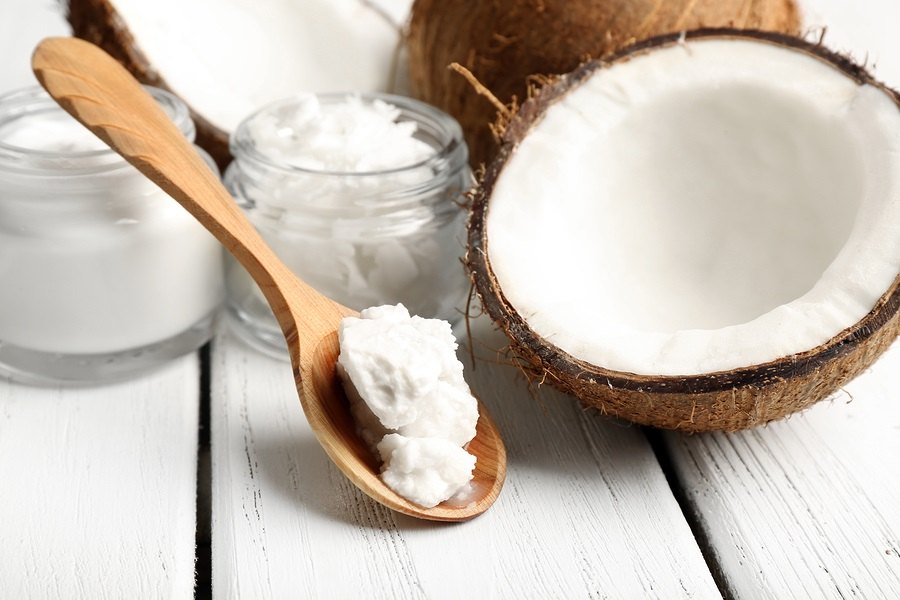
by Paul Fassa
Health Impact News
Candida overgrowth or yeast infections have been on the rise over the past few decades. Mainstream medicine offers little or nothing toward resolving candida or yeast infections that have been internalized. Although mostly written about and publicized by women for women, it occurs in both men and women.
Candida yeast colonies are known to sequester pollutants, heavy metals, and even cancers that develop into tumors. Controversial Italian oncologist, Dr. Tulio Simoncini, even declared that cancer is yeast.
However, others maintain the candida yeast is simply an environmental symbiotic support for cancer.
Perhaps over 40 million Americans suffer from various candida ailments that are discomforting precursors to worsening health. Many who are afflicted are not that aware that candida is the source of their problems.
If it gets into the blood and spreads throughout the body it can become debilitating and possibly life-threatening candidosis or candidiasis. (Source)
Possible Indications of Candida Overgrowth
As the candida albicans is on its way to overpopulating the gut, health complaints mount that elusively avoid positive permanent resolutions, even with harsh anti-fungal prescriptions that create unhealthy side effects.
This article will present some natural solutions for symptoms that may be from candida albicans overgrowth, such as:
- Increased fatigue, especially after eating.
- Bloat, excess belching or flatulence.
- Tongue usually coated with white slime upon awakening.
- Chronic sinus or urinary tract infections.
- Vaginal infections; men’s jock itch.
- Frequent mental fog issues.
- Intense sugar cravings.
- Excess mucous.
- Extreme mood changes occurring often.
- Chronic allergic reactions.
- Skin infections that create chronic itching, burning, and/or toenail fungus that persist despite topical anti-fungal applications.
These are a few symptoms that may make you suspicious of Candida overgrowth or spreading yeast infections. One should seek testing for candida to see if it has become so dominant in the GI tract that it is potentially the main source of all one’s medical complaints.
At first, the candida albicans or C. albicans exists as single cell yeast or fungi that represent a small minority of the gastrointestinal or GI tract gut microbiome. Everything is fine until the C. albicans’ cells adhere to the inner small intestine cell walls.
Then certain triggers stimulate the once lonely C. albicans to aggressively form colonies and even morph into other more virulent filament versions of C. albicans.
There are 20 types of candida, but candida albicans or C. albicans is the most common strain of candida that poses a threat toward disproportionate excess fungal growth in the gut, which could spread into other organs.
Advice from a Clinic That Has Had Multiple Candida Successes
Acupuncturist and functional medicine clinic operator Chris Kresser advises, “Test, don’t guess” for candida concerns. He adds:
One of the tenets of functional medicine is you have to address the underlying cause of a problem in order to get the best result long term. You can’t address the underlying cause if you don’t know what it is. If you just assume that it’s yeast overgrowth based on some symptoms, that’s not really adequate in terms of making a diagnosis because the symptoms of fungal overgrowth are extremely nonspecific. [i.e. – they could be from other internal biological imbalances or diseases]
There are three medical tests appropriate for determining candida overgrowth.
(1) A stool analysis to observe pathogenic yeast possibilities or parasites, which themselves may be what’s behind those mysterious maladies that won’t go away.
(2) Another test looks for organic acids that are part of fungal metabolic waste products.
(3) Then there is a blood test that checks for fungal antibodies.
If there are insurmountable obstacles preventing you from getting one of those tests, there is another common, yet controversial, DIY home test (that some consider invalid).
DIY at-Home Candida Test
For six days, keep a pen and paper in the bathroom. When you wake up, (before you eat or drink anything), fill a glass of water halfway and spit a dime-sized amount of saliva into the glass.
Your saliva will either,
a) stay floating on top,
b) it will sink to the bottom,
c) or it will grow legs.
If it stays floating on top, there is likely no candida overgrowth to worry about, but if it grows legs or especially if it sinks, then candida is likely an issue for you.
Herbal Remedies That Get Rid of Candida Yeast Infections
The polymorphic nature of C. albicans is that it makes candida elusive. One might consider consuming more than one natural anti-fungal spice or herb as treatment remedies. Here are some that are used in Chris Kresser’s clinic staffed by naturopaths and holistic doctors:
- Uva ursi
- Cat’s claw
- Pau d’arco
- Lauric acid – which coconut oil contains in large amounts.
- Biotin – usually at 5 mg per day
- Gymnema Sylvestre – Indian herb used for reducing blood sugar also inhibits candida growth.
- Saccharomyces boulardii – a beneficial strain of yeast that inhibits the growth of candida.
- Soil-based probiotics – they don’t break down from stomach acids, they arrive in the gut intact.
As mentioned, coconut oil contains lauric acid, and is in fact nature’s most abundant source for lauric acid, shown to be effective in fighting fungal-yeast and Candida.
Two other anti-fungal compounds are found in coconut oil: caprylic acid, and capric acid. See: Coconut Oil and Candida Yeast Infections.
It has been suggested that around 3.5 tablespoons of coconut oil consumed daily may have a therapeutic effect on C. albicans overgrowth. A lesser daily amount would probably be preventative.
Coconut oil is comprised of mostly medium chain fatty acids (MCFA) or medium chain triglycerides (MCT), making it easy to metabolize into usable energy by the liver instead of producing fat for energy storage. And of course, there are other healthy effects from coconut oil use, such as losing weight by increasing metabolism of fats. (Source)
There are some who combined taking anti-fungal natural grapefruit seed (not grape seed) extract with coconut oil, not mixed but taken separately, with good results against candida overgrowth. Be on the alert for candida “die-off” (sometimes called a “Herxheimer reaction”) creating a “healing crisis,” where you feel like it’s not working. One coconut oil user, Tom, reported about this:
I have only recently discovered coconut oil and want to relate how it caused a severe Herxheimer reaction. I’ve been battling a systemic candida yeast infection for over ten years. I have the mutated (fungal) stage and it’s the toughest thing I’ve ever had to deal with.
I recently read research reports out of Harvard and the University of Tennessee that this can be deadly and there are no phamaceuticals for it that are effective.
Candida yeast can overgrow in the gut under the right conditions until it mutates and becomes an invading pathogen, moves out of the gut and grows in mass in any part of the body. When it affects a vital organ, then it can be deadly.
I’ve tried everything from conventional drugs to all the natural remedies including caprylic acid but have never experienced a die off reaction as I did when I took the coconut oil and aerobic oxygen for about one week.
I have subcutaneous masses on the scalp, face, buttocks, arms, and probably internally, that I can’t see. I applied the coconut [oil] heavily and would melt a large hunk in my mouth all during the day.
My skin is starting to look better and I know from the reaction that it killed off a lot of candida. The Herxheimer reaction is a welcome sign that you are doing something right. In cases where people are suffering with a chronic problem there may be a quick and somewhat adverse reaction.
The “die-off effect,” or Herxheimer Reaction, refers to symptoms generated by a detoxification process. As the body begins to deal with dead microbes, one may experience a vareity of detox symptoms.
I am now recovering from the reaction and will start another round of coconut oil. [This oil] is something I will not be without for the rest of my life. Brian, thanks for all your efforts in bringing this to market. Tom (Source.)
If it is simply working too well for your system to eliminate the garbage from the die-off, it might be wise to lessen your dosages of whatever treatment is being used, slightly after a very short break from treatment.
Prevent Candida by Avoiding a Standard American Diet
Controlling Candida is mostly about diet, and avoiding anti-biotics that upset our natural microbiome.
The standard American diet (SAD) is very problematic and conducive to allowing fungal overgrowth infections because it is fraught with refined carbs, bad oils, and refined sugar or HFCS (high fructose corn syrup). These are the true culprits of obesity, not saturated fat.
This type of diet leads to an overall acidity in the body marked by a lower pH than the ideal slightly alkaline 7.4 pH. As ones pH drops below 7, health problems arise.
Without at least semi-annual detox regimens, toxic chemical and heavy metals begin to create inflammation that disturbs gut linings, making them vulnerable to candida clinging, leading to a gut overgrowth.
Women Who Consume Birth Control Pills More Vulnerable to Candida
Women who consume birth control pills are more vulnerable to candida overgrowth than women who do not use birth control pills. Excess alcohol is also a contributor. Antibiotics simply kill off too much supportive bacteria in the gut, creating an imbalance in the gut flora which invites candida to take over.
No exercise, poor sleep, and chronic stressing are also involved with creating candida albicans overgrowth.
Make Some Lifestyle Changes
Shifting to a real wholesome fresh food diet from trusted natural sources with little or no chemical processing or genetic engineering, getting better sleep, and moderate exercise, are the basics for avoiding fungal infections.
Comment on this article at HealthImpactNews.com.
See Also:
Coconut Oil and Candida Yeast Infections



 Research Continues to Show Virgin Coconut Oil's Effectiveness in Treating Cancer
Research Continues to Show Virgin Coconut Oil's Effectiveness in Treating Cancer Coconut Oil Continues to Benefit Alzheimer's Patients over Drugs as Studies Continue for Neurological Benefits
Coconut Oil Continues to Benefit Alzheimer's Patients over Drugs as Studies Continue for Neurological Benefits How the Simple High-Fat Low-Carb Ketogenic Diet Continues to Change People's Lives
How the Simple High-Fat Low-Carb Ketogenic Diet Continues to Change People's Lives New Studies Continue to Show that Coconut Oil is the Best Oil for Treating Skin Conditions and Maintaining Healthy Skin and Teeth
New Studies Continue to Show that Coconut Oil is the Best Oil for Treating Skin Conditions and Maintaining Healthy Skin and Teeth New Study Confirms Health Benefits of Coconut Oil and USDA False Claims Against It
New Study Confirms Health Benefits of Coconut Oil and USDA False Claims Against It